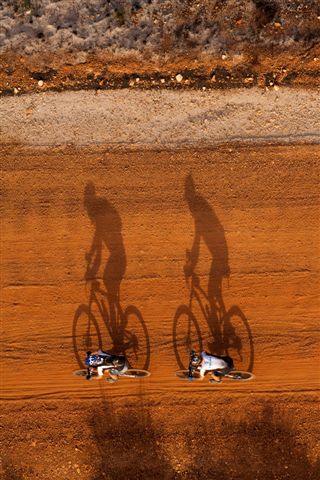I am busy planning by excursions for July and in the process decided that I need to beef up on my equipment for when I venture into dangerous areas. I will write more on my equipment and the stuff that I am buying later, but I want to first share something else that I realized.
In my planning of the new routes I realized that I am actually creating my own adventures. Some of the routes that I lay out can be easily converted into an official MTB route, but some of them are simply too wild and somewhat dangerous to simply be a recreational MTB route. It contains some serious climbing, some really mean single track and in some cases extensive tracking while pushing or carrying your bike. It not only requires physical strength and stamina, but mental strength and stamina as well. I therefore realized that I am actually not laying out new routes, but I am actually planning adventures. (It was then that I realized that what I am doing is just a personalized version of adventure racing. I am not very knowledgeable about adventure racing, but I am now starting to wonder whether I may perhaps find myself within this sport. )
Lisa de Speville posted an excellent article on the topic of Micro Adventures on the ar.co.za website. In it she develops a case for planning your own adventures and building weekend and holiday breakaways into micro adventures. In these you cross a mountain along a new route, you cycle, hike and run in the same trip or you plan your own (sometimes difficult on purpose) routes to get to a destination. You go off the beaten track. You take the difficult route simply because it is there and you would like to see how it looks. You build your own adventure. Using this approach, no holiday or training run ever needs to be boring. It may mean that some more intense planning is recovered, that we need more gear and that we may venture to the edge of true danger, but the rewards are truly spectacular. You test yourself physically and you grow mentally. It is not just mountain biking. It is custom mountain biking and a kind of mountain biking obstacle course.
Below is a photo taken by Gary Perkin during the 2009 ABSA Cape Epic. These guys, being small on their bikes, were enjoying themselves and had the ride of their lives, but without knowing it, they had big shadows. The Venda people say that you have a heavy shadow when you have authority and that your life and your words have an impact on other people. If adventures build us and develop our characters, it is perhaps a good idea to create our own adventures to grow in character and develop a big shadow.




